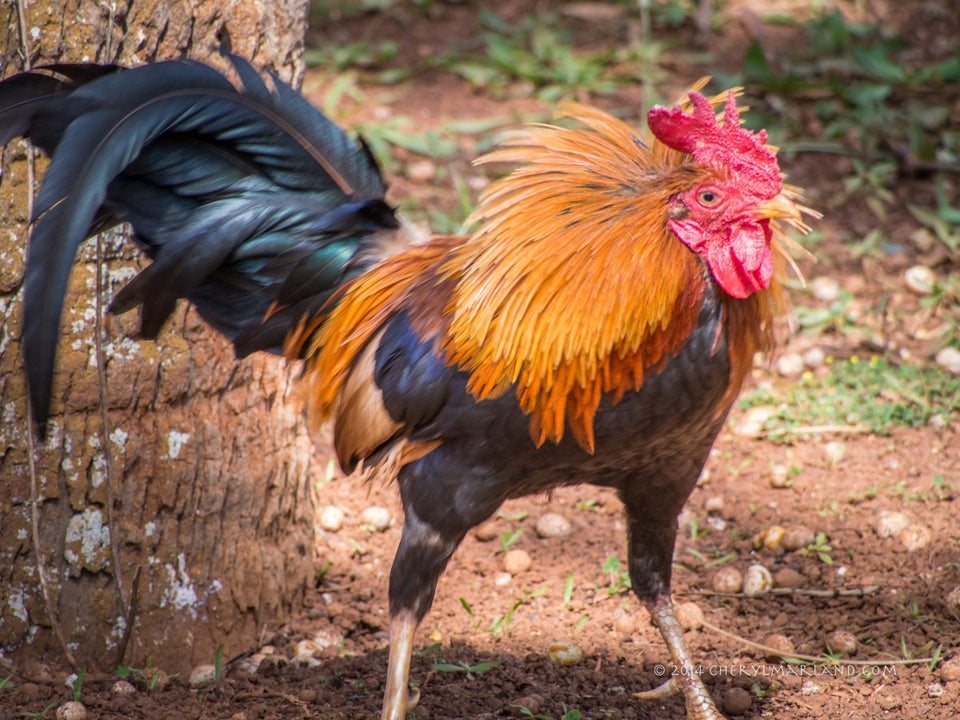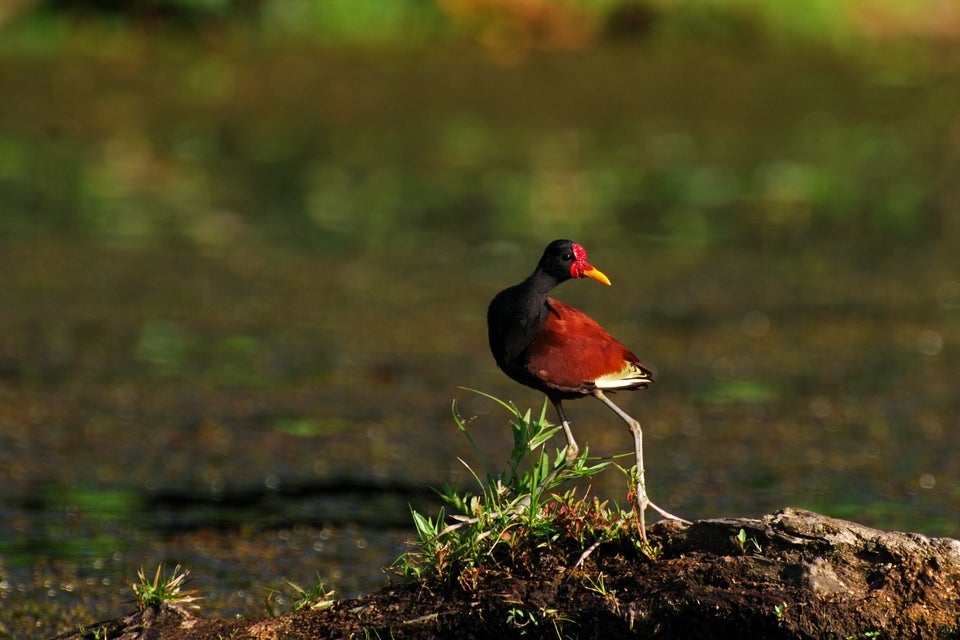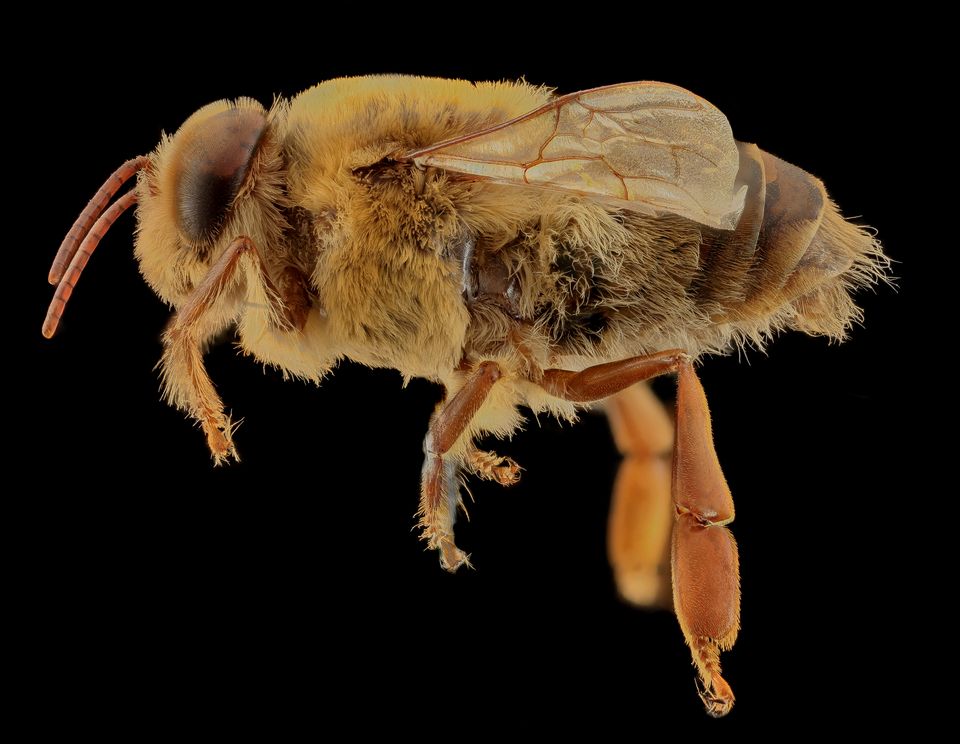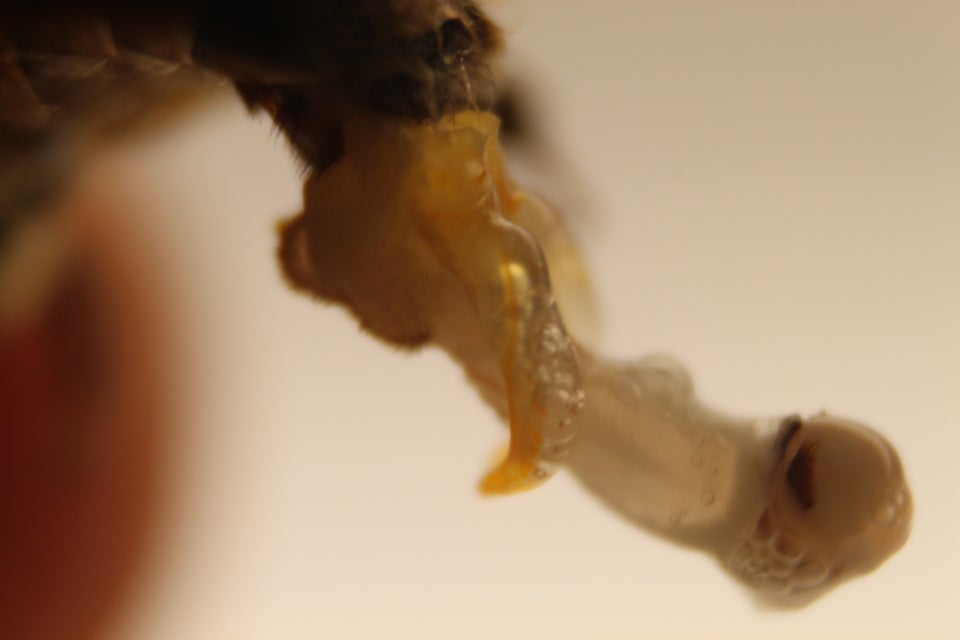Most mothers would not be happy with this great blue heron, who didn't take the time to chew before it swallowed.
Jessie Garza posted a video to Facebook of the great blue heron in his front yard in Zillah, Washington. The majestic bird can be seen hunting, killing and swallowing a small gopher.
Remarkably, many of the great blue heron's distinguishing characteristics are on display in the video: its specially shaped neck vertebrae, its frighteningly fast striking speed and its ability to swallow small mammals whole.
Advertisement
To see why this animal is a favorite of nature enthusiasts, check out the video above.
Related
Before You Go
1
Most Male Birds Don't Have Penises

Ninety-seven percent of bird species don't grow penises. But why? A 2013 study that compared chickens (who don't have penises) with ducks (whose penises are "large and elaborately coiled," according to one description) found that a sort of cell suicide, called "programmed cell death," is to blame.“Evolution comes down to reproductive fitness," Martin Cohn, a University of Florida biologist, told the Los Angeles Times. "So it’s remarkable that a group of animals would eliminate a structure that’s so important for reproduction.”A theory as to why birds lost their penises is that female birds may have preferred it, since, as The Scientist put it, birds of this disposition "are less capable of unwanted advances and thus give female birds more choice in which males father their young."
2
Birds Get Romantic With a "Cloacal Kiss'

WikiMedia:
For those birds without penises, mating takes the form of the "cloacal kiss." The cloaca is an orifice found on the rear of both bird sexes. It serves a whole bunch of functions: pooping, peeing, egg-laying, and sperm ejection. When it's time to mate, the cloaca will swell. The male and female birds will then rub their swollen cloaca together, once the male hops atop the female and the female moves her tail out of the way. The ensuing "kiss," or sperm transfer, is, generally speaking, vanishingly brief.
3
Advertisement
4
5
Some Female Birds Are Polyamorous

WikiMedia:
You'll hear the statistic that some 90 percent or more of birds are monogamous. More nuanced accounts of bird monogamy suggest that even among our "socially monogamous" feathered friends, it is quite common for DNA testing to reveal the presence of "illegitimate" chicks in the brood. In other words, bird society is really interesting. Wattled jacanas -- like the bird in this photo -- are explicitly polyandrous, meaning the female birds take on multiple male lovers. Female wattled jacanas mate with many males, who then incubate the eggs and raise the chicks, even when paternity isn't clear. This setup is a rare state of affairs, as it were, both in and out of the bird world.
6
Good Thing Baby Penguins Are Sooooo Cute After That Long Incubation

WikiMedia:
Emperor penguins have one of the bird world's longest incubation periods. Females lay one egg in May or June (wintertime in Antarctica), then skedaddle to look for food. The male penguins incubate the eggs -- on their feet, not eating, in temperatures that can go down to -76 degrees Fahrenheit -- for 65-75 days. Moms come back and regurgitate the food they've hunted while away to feed their newly-hatched chicks.
Advertisement
7
8
Drones Have No Fathers

WikiMedia:
There are three kinds of bees in a hive: a queen, worker bees (who are female) and drones (who are male, and make up a small percentage of the hive population). Drone bees are produced when a queen bee lays unfertilized eggs. That's right, unfertilized eggs -- which means that drones, whose main purpose is to mate with the queen and then die, are themselves fatherless.
9
Regicide Is A Fact Of Life For Bees

WikiMedia:
During her mating flight, the queen bee will mate with lots of drones. She'll then store their sperm inside her body for the rest of her life (up to a couple of years), laying thousands of eggs -- fertilized and not -- to replenish the colony. Drones hatch from unfertilized eggs. Worker bees hatch from fertilized eggs; there are more worker bees than any other type in the hive, and they do almost all the work. Queen bees -- those are two queen bee larvae in the photo -- also hatch from fertilized eggs, but ones that have been fed royal jelly by workers, once the original queen's fertility is failing. The first queen to hatch will often kill the other developing queens. Queens are killed in various other circumstances as well; when worker bees kill a queen bee as a group, it's called "balling."
Advertisement
10
This Is A Honeybee Penis

WikiMedia:
In case you were wondering what one looks like, this is an "everted" bee endophallus, filled with semen. Once the bee ejaculates -- it's sometimes called an "explosive" ejaculation -- he'll die. And if you find this interesting, which we expect you do, check out this guide to collecting bee semen for artificial honeybee insemination. Last year, Washington State University started a bee semen bank, in fact, in an attempt to help stop this country's bee colony collapse. WSU's bee semen is collected from European bees, who, it's hoped, will pass on hardier genetic material here in the U.S.